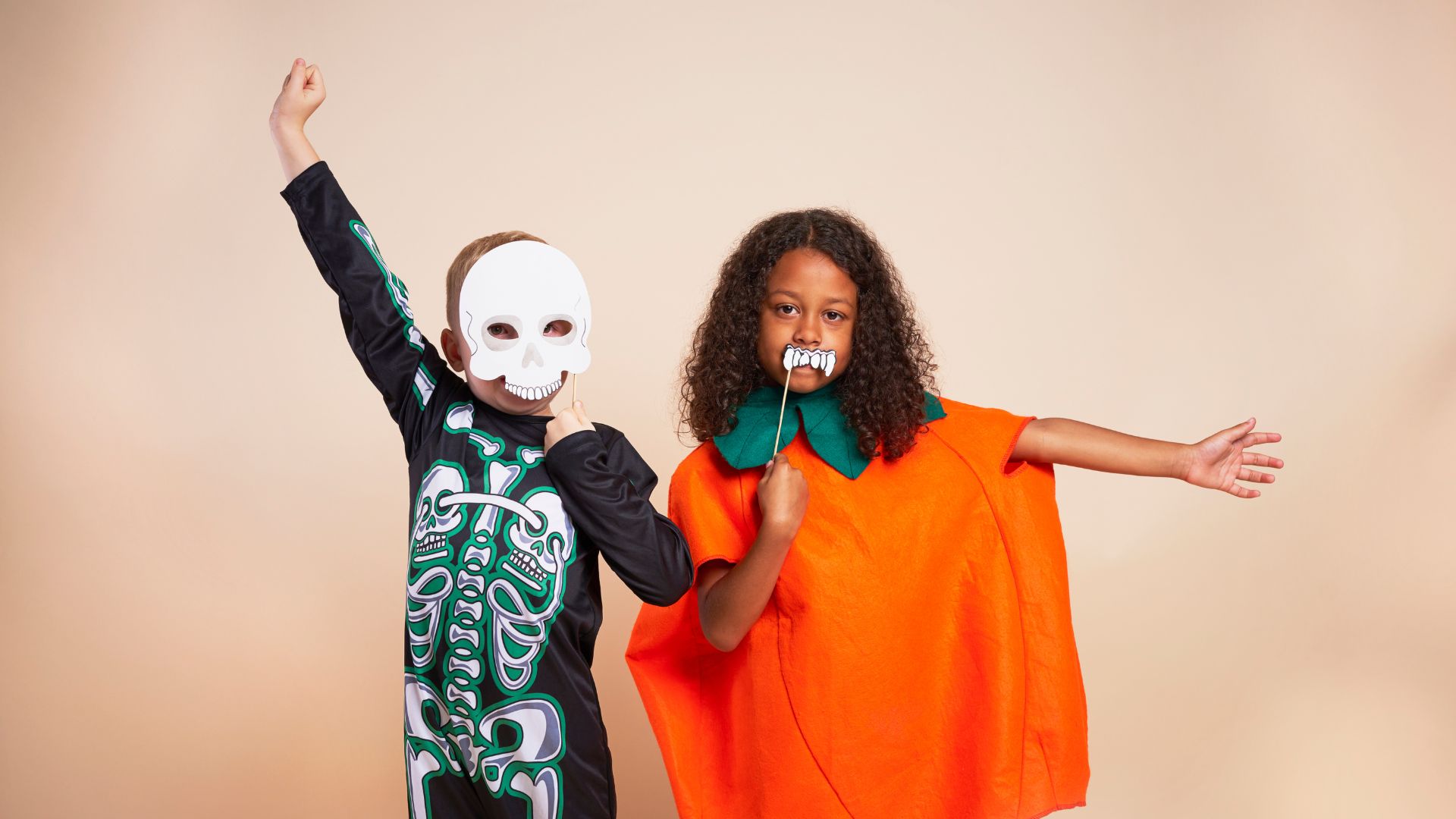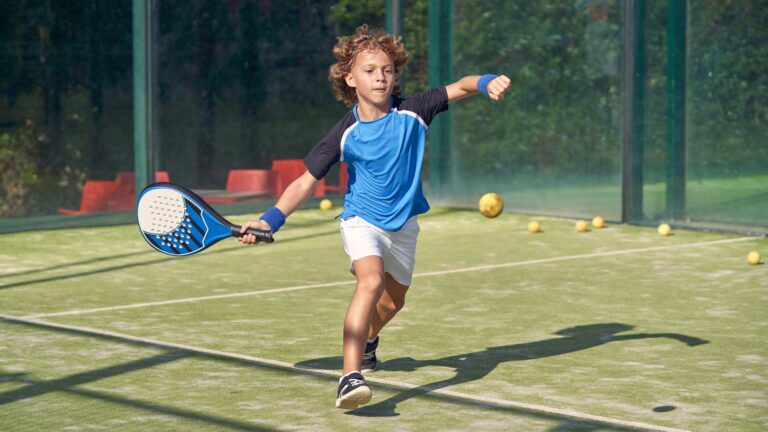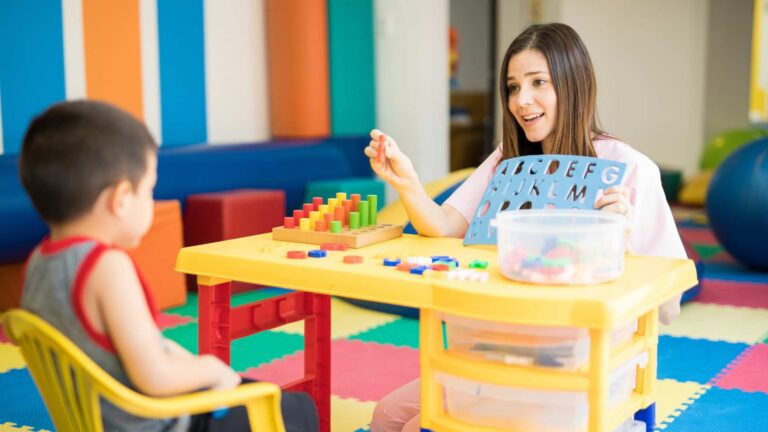With the spooky season quickly approaching, now is the perfect time to discuss ways to enjoy an autism-friendly Halloween. The holiday can be tricky for children and teens on the spectrum due to sensory concerns, decorative displays, and other jeopardizing events. But fear not, as these tips will give you and your loved one all the info needed to enjoy a spectacular autism-friendly Halloween free from stressors and complicating factors.
At Texas ABA Centers, we continuously strive to provide relevant resources regarding autism care, and holidays are perfect opportunities to inform and educate. We wish to prepare you well in advance, whether you live in Austin, Houston, or Dallas, so let’s explore the best tips for an autism-friendly Halloween to give your loved one confidence during the spooky season.
Why is Halloween Tricky for Individuals with Autism?
Many individuals with autism spectrum disorder (ASD) face challenges with various aspects of Halloween. While the holiday’s scary nature is supposed to be light-hearted and enjoyable, this isn’t the case for everyone. Children and teens with ASD are much more susceptible to anxiety and stressors, many resulting from sensory-related challenges. Between public decorative displays with spooky creatures, bright lights covering houses, and extravagant costumes of ghosts, zombies, and demons, a lot can cause stress for someone on the spectrum.
This uptick in stimulating visuals and sounds can quickly cause sensory overload in children and teens on the spectrum. Failure to address and prepare for these potential complications can lead to meltdowns, tantrums, and significant fear of social settings (especially when designed to look frightening). Fortunately, with proper planning and knowledge, parents can ensure their loved ones enjoy the holiday to their best.
Tips for an Autism-Friendly Halloween
These recommendations cover traditional aspects of Halloween, such as trick-or-treating, but also offer some outside-of-the-box ideas for you to consider this October.
1. Plan, Plan, and Plan Again! – The best way to prepare for a sensory-friendly Halloween is to plan well beforehand. You can plan a variety of things on the holiday, such as what to do, where to go, when it will happen, and how long it will be; this goes for trick-or-treating, get-togethers, and any other social activity that may alter a routine your child typically follows.
Part of this planning involves informing your child about Halloween and the spooky aspects of the holiday. Introduce various concepts to them to alleviate potential stressors – this can be you explaining that zombies and vampires are mystical creatures or watching a TV show or movie that humanizes these Halloween-related beings to show they’re not all frightening. By acclimating your child to the good-hearted nature of Halloween, they’ll feel less nervous to see potentially startling visuals during the day.
If your child wants to trick-or-treat, you can also plan for that. Consider doing a stroll down the block to examine decorations that may pose sensory concerns or feature jump scares. You can also benefit from mapping out your route to let your child know which houses they can go to, how long they expect to be out for, and when they can return home.
2. Get Your Child Involved in the Fun – Halloween can be made more enjoyable by involving your child in the preparations. Engaging them in age-appropriate tasks related to decorating or choosing costumes can stimulate their creativity and make them feel more connected to the holiday. This involvement can help reduce anxiety and increase their comfort level with Halloween-related activities.
Consider crafting decorations together, like paper ghosts or friendly pumpkin faces, using materials your child finds comfortable. You can also collaborate on choosing or making their costume, ensuring it aligns with their sensory preferences. If they prefer softer textures or have specific clothing sensitivities, designing a costume that accommodates these needs can be a fun project.
Additionally, engage your child in deciding which Halloween activities they want to participate in. Some children may prefer staying home and handing out candy to trick-or-treaters, while others might enjoy visiting neighbors’ homes for treats. Giving your child some control over their Halloween experience allows you to tailor the festivities to their comfort level and interests.
3. Host an Eerie-sistible Get Together – Consider hosting a Halloween gathering at your home. This way, you have control over the environment, making it easier to create a sensory-friendly space. Choose decorations that aren’t overwhelming, opt for softer lighting, and designate a quiet area for your child to retreat if they feel overwhelmed.
Encourage your guests to choose non-scary costumes and offer a variety of sensory-friendly treats. Plan structured, inclusive, and adaptable activities to your child’s comfort level. By hosting a Halloween get-together in this manner, you can create a safe and welcoming environment for your child to enjoy the festivities while staying within their comfort zone. This approach helps your child feel more at ease and allows them to socialize with understanding friends and family members.
4. Set up a Play Date – Arrange a Halloween-themed playdate with your child’s friends or classmates who understand their specific needs; this can be an excellent way to engage in social interactions in a familiar and supportive setting. Coordinate with the parents of your child’s friends to ensure everyone is on the same page regarding sensory-friendly activities and costumes.
Consider organizing activities like pumpkin decorating, cookie decorating, or a costume parade where everyone can showcase their outfits in a non-competitive and stress-free manner; this allows your child to participate at their comfort level, promoting a positive social experience.
5. Set a Pace and Bring Reinforcement Items – Trick-or-treating can be exciting and overwhelming for children with autism. To make the experience more enjoyable, establish a comfortable pace that suits your child’s sensory needs. This notion might mean visiting fewer houses or spacing out visits to allow for sensory breaks.
Consider bringing sensory reinforcement items, such as noise-canceling headphones to reduce loud sounds, sunglasses to manage bright lights, or a weighted blanket for comfort. These items can help your child feel more at ease during the outing.
Additionally, having a preferred item or snack on hand can be a valuable reward during the trick-or-treat adventure. If your child successfully visits a few houses or handles a challenging sensory situation, you can offer this reinforcement item as a motivating reward.
6. Attend Local Events – The Austin, Houston, and Dallas metropolitan areas feature many fun activities and events throughout October. Whether you plan on attending early in the season to prepare or closer to Halloween, there’s a little something to do for everyone.
The 6th Annual Trunk or Treat party in Plano kick starts on Saturday, October 21st, at Windrose Academy. This autism-friendly event will feature trunk-or-treat fun (whereby organizers decorate the trunks of their vehicles in Halloween-themed décor and pass out candy or other goodies), fair games and prizes, food, and photo ops, all monitored by teachers and therapists.
Austin residents can enjoy a Halloween Spooktacular event on Sunday, October 29th, from 2 – 5 PM. Hosted by the Armstrong Community Music School in West Lake Hills, children will enjoy live spooky music, trick-or-treat, crafts, and more!
Families from Houston can attend the Woodlands Children’s Museum Spooktacular Halloween party on Halloween from 9 AM – 2 PM. Children can check out Monty the Magician Magic shows from 10:30 to 1:30 on the half-hour, as well as art projects, games, and a Monster Mash Boogie Bash at 10 and 11.
Get Started With Texas ABA Centers
If your child or loved one needs additional support championing sensory-related challenges, check out Texas ABA Centers’ autism care services. We specialize in ABA therapy to teach kids critical life and behavioral skills to promote independence and autonomy as they enter their teen and adult years.
Call (877) 771-5725 or visit our website to learn more about our ABA services or a free consultation.








